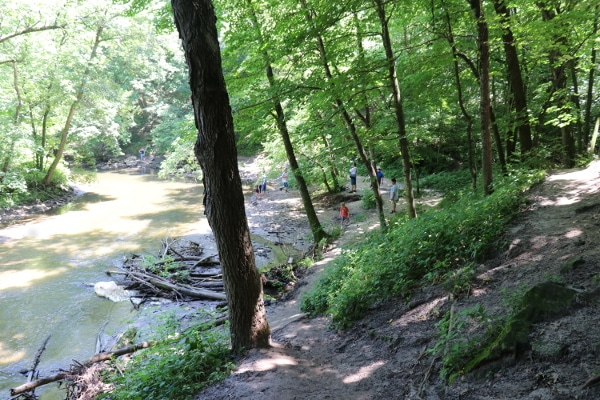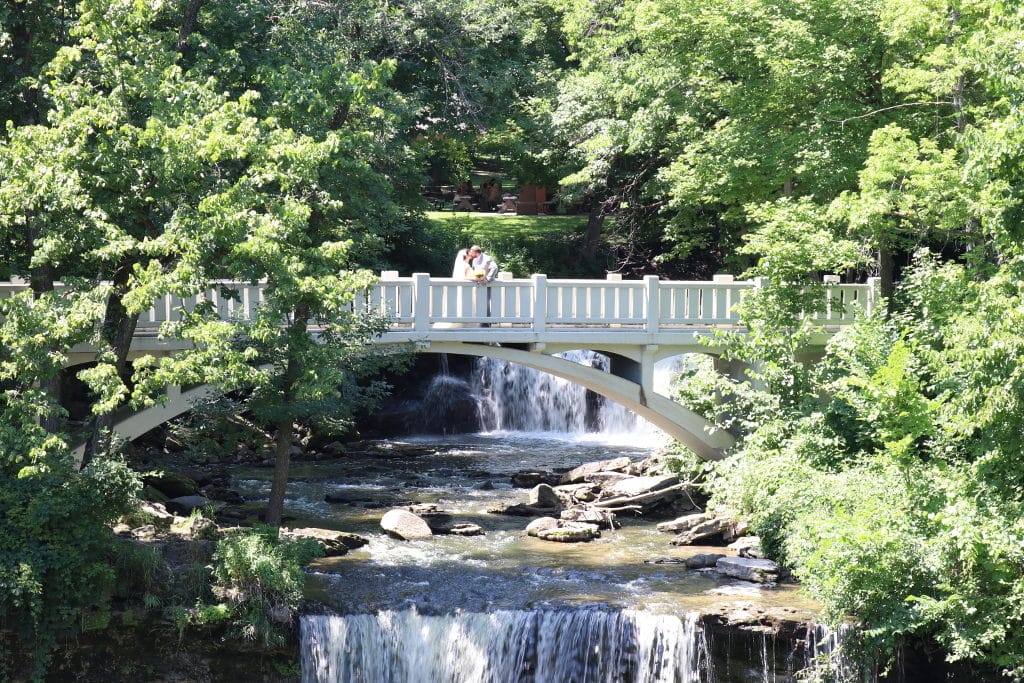As the cool mist of the water fell gently on our faces from the first waterfall, we crossed the bridge that divided the two waterfalls. As we watched the water that gently met the rapids at the bottom of the first waterfall. Then as if in a race it quickly turned rapidly started to fall into the second waterfall. As we watched the rapids quickly run under the bridge we were standing we got a small glimpse of the second waterfall as the water was falling off the cliff. As we watched the waterfall into the second waterfall, we knew that this was just the beginning of our adventure, after all, there were still bison waiting for us to see

We then followed the rocky limestone trail to the banks of Minneopa Creek, it felt as if we had entered Minnesota’s little rainforest. From this location, we could start to hear the gentle roar of the second falls. The word Minneopa has its origins in the Dakota language and translates roughly “water falling twice”.
As we continue on the dirt trail to the bottom of the waterfall we were surrounded by limestones walls that reached over 20 feet. Which is a perfect shaded location to take a quick break and just enjoy the sounds of rushing water.
As we left the waterfall part of the park, we reenergized ourselves for the second part of the state park that offered a unique view of free-range bison where you can drive through the park. As we drove through the small road, we glazed across the opened prairie carefully watched to see if we would be lucky enough to see the bison at 75 feet. There is around 300 bison roam this particular state park which was their prairie land.
Standing quietly on a hill in the northwest corner of the park, we enjoyed learning about the Seppmann windmill. The windmill was designed after windmills from Mr. Seppmanns native Germany. Construction was completed in 1864, and it was capable of grinding up to 150 bushels of wheat into flour. You may be wondering where the windmill’s arms are, the answer is simple. In 1890, a tornado struck and removed the blades, but was never replaced due to windmills had become unprofitable by this time.
As we concluded our trip to Minneopa State Park, with memories of the incredible waterfalls, knowing that this will not be our last visit to this beautiful location with all of its history and areas to explore.
Outside of a zoo, where have your children seen wildlife in a natural environment like this?
